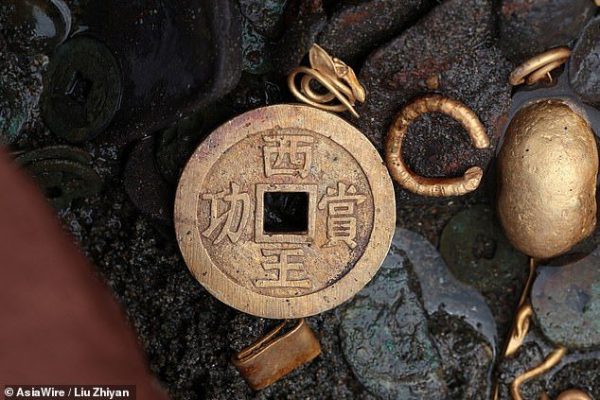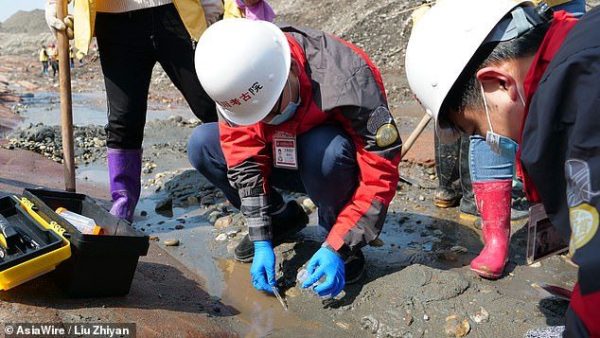Chinese archaeologists studying the remains of a Ming dynasty battlefield have uncovered an extraordinarily rare golden seal from the 1600s.

This ancient symbol of power, once belonging to a Chinese emperor-to-be, weighs over 17 pounds and is composed of 95 percent pure gold. It is the first instance where researchers have found a piece of gold treasure connected to the prince and heir apparent of a Chinese imperial throne.
Li Yuqian, the lead archaeologist and director of archaeometry at the Sichuan Provincial Cultural Relics and Archaeology Research Institute, hailed this finding as “among the most significant in recent years” and “the only one of its kind in the world.”

The intricately carved stamp, measuring 10 by 10 centimeters and featuring a pure-gold handle in the shape of a tortoise, bears the words ‘Shu Shi Zi Bao,’ meaning ‘Treasure of the Shu Prince.’
The treasure was deliberately shattered when the monarchy was overthrown during a riot and bloody peasant uprising more than 370 years ago.
It is believed to have been in the possession of Zhang Xianzhong, also romanized as Chang Hsieh-chung, who led the peasant revolt that conquered modern-day Sichuan and its largest city of Chengdu in 1644 during the fall of the Ming dynasty.

Zhang, known as the ‘Yellow Tiger,’ was ambushed by Ming loyalist general Yang Zhan in 1646 when he fled Chengdu to escape the invading Manchus, founders of China’s last empire, Qing (1644 to 1912). Zhang and his treasures, including the shattered golden seal, were reportedly thrown into the depths of the Min River.
The recent discovery, along with around 10,000 other artifacts, sheds light on China’s rich history and represents a unique and historically significant artifact offering valuable insights into the past.

The gold seal, found shattered into four pieces, remains one of the most noteworthy discoveries among the artifacts unveiled by Liu’s team after months of excavation at the Jiangkou Chenyin Historic Site.
The construction of the Jiangkou Chenyin Museum has been funded with an investment of 500 million yuan (£56.3 million) and is set to begin at the end of 2020.
The discovery is a result of the third phase of a larger archaeological project that commenced in 2017 along the banks of the Min River in the Sichuan town of Jiangkou.

The project has so far unearthed over 52,000 artifacts, with this recent find standing out as an exceptional historical treasure.





